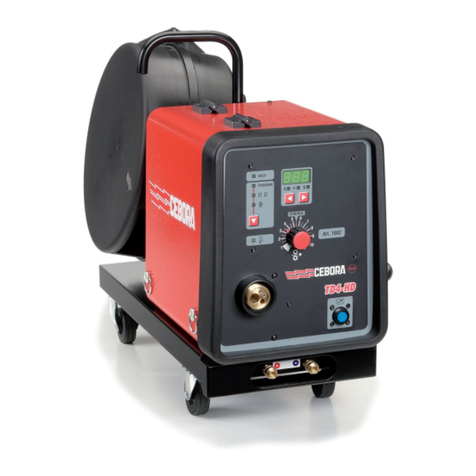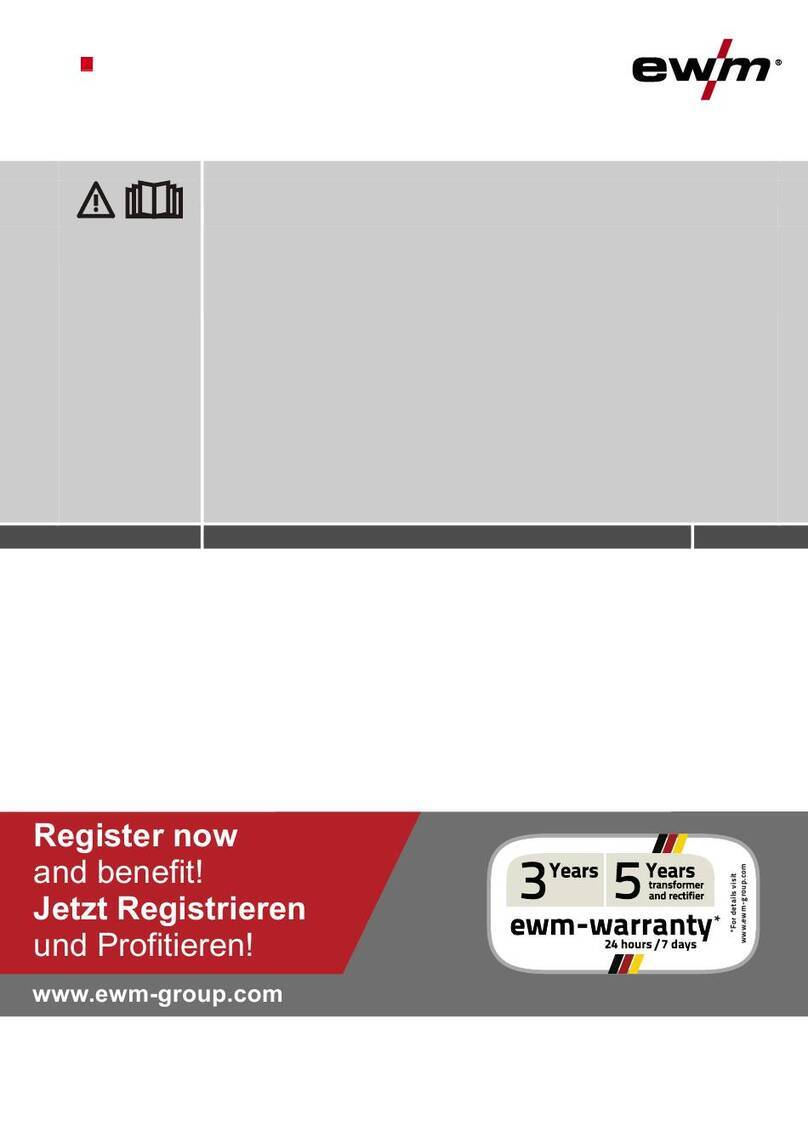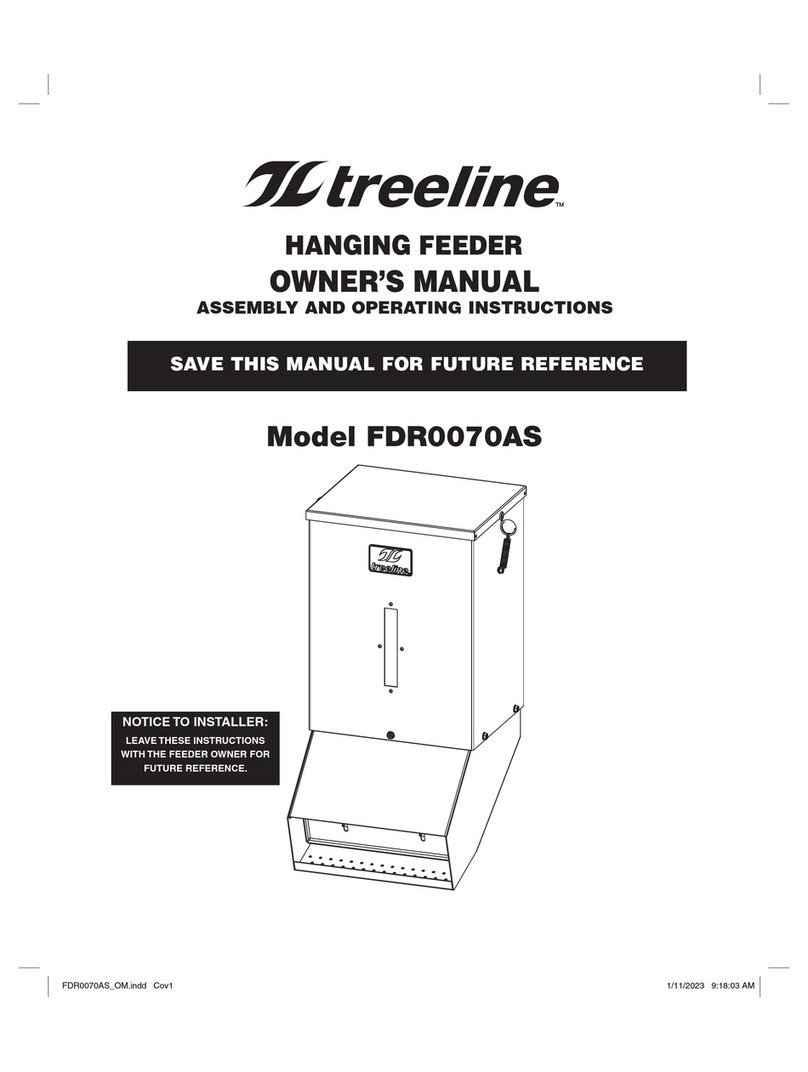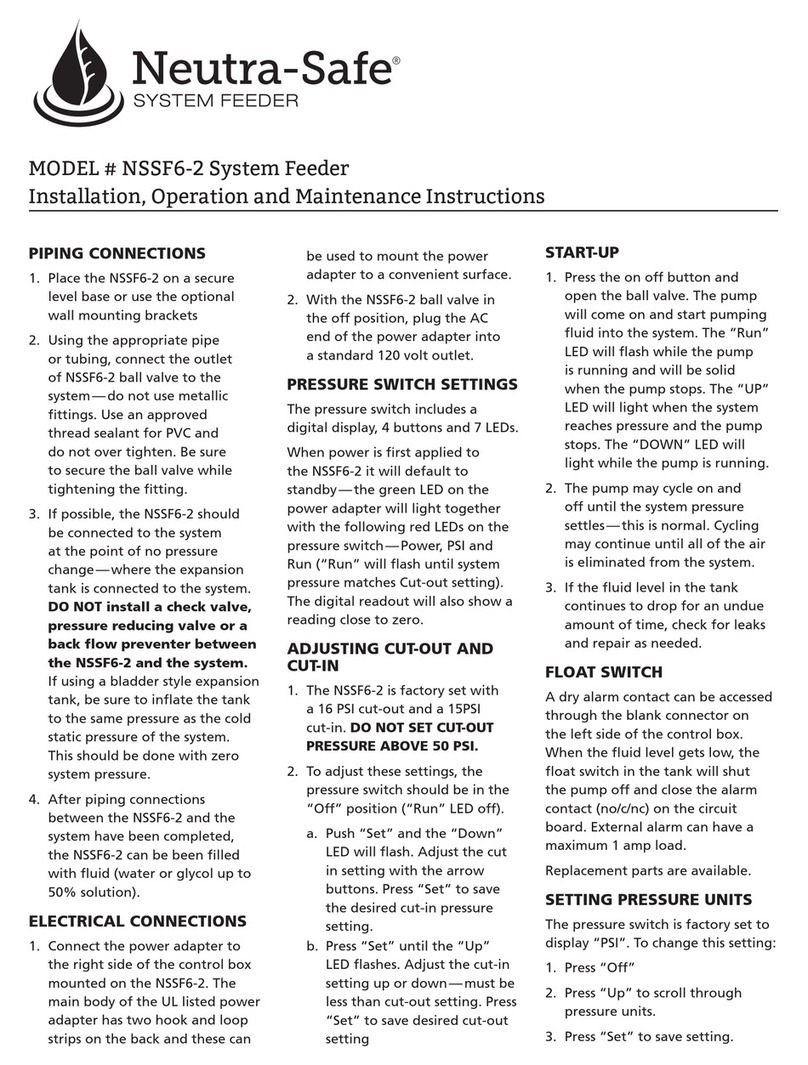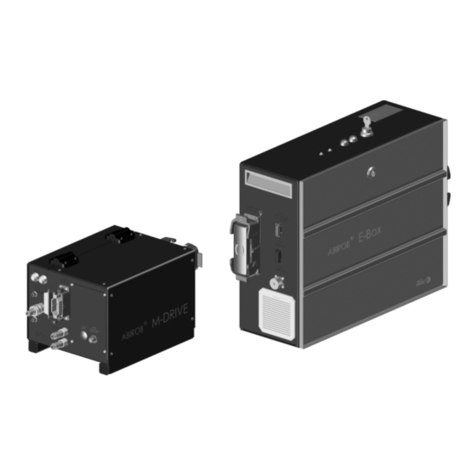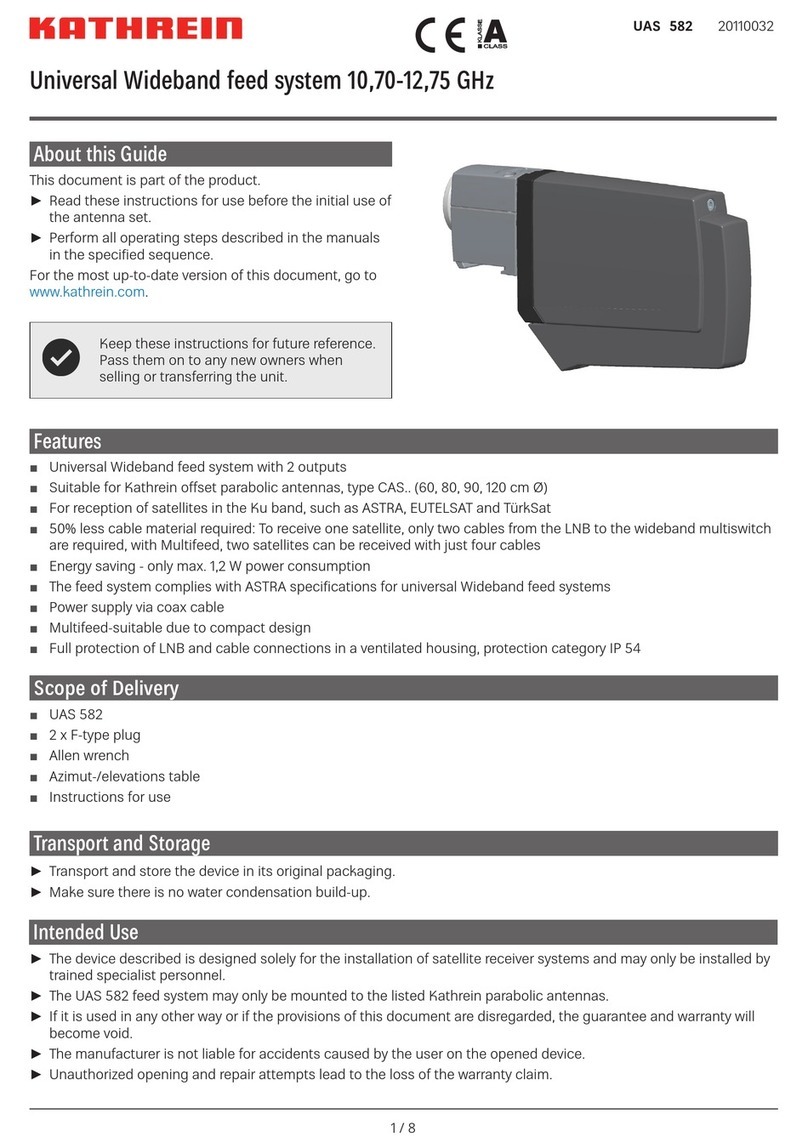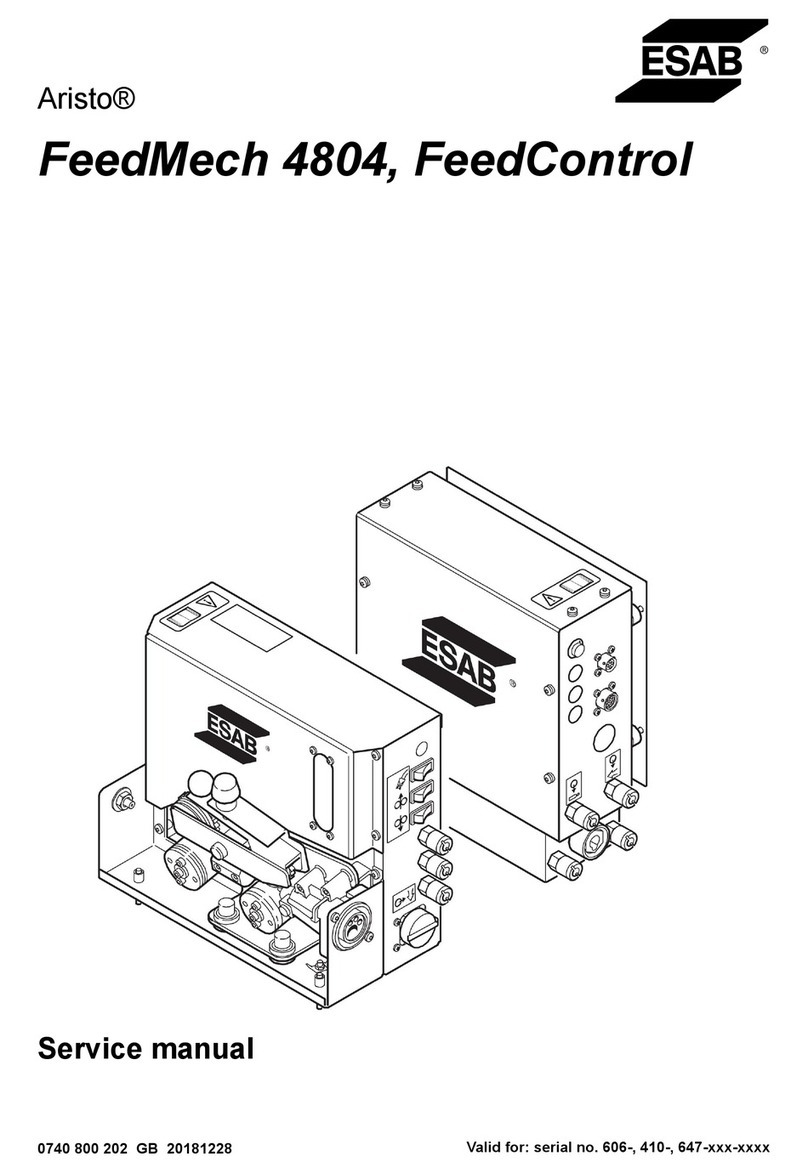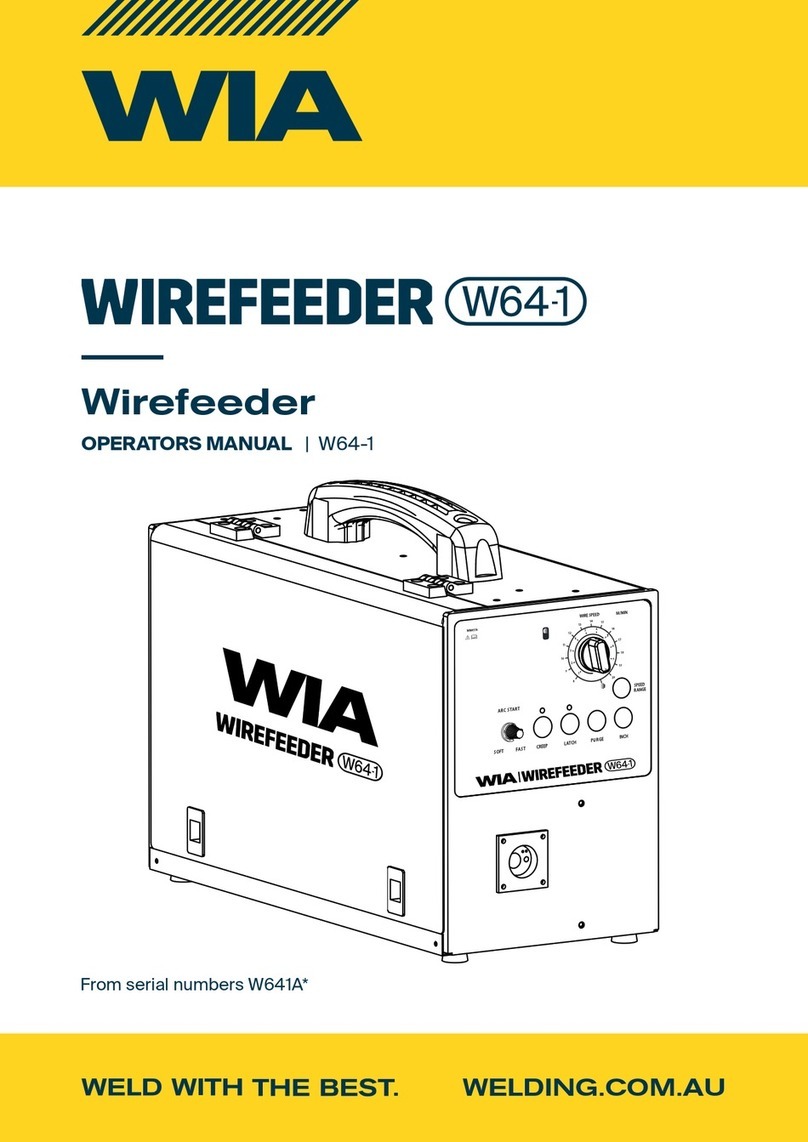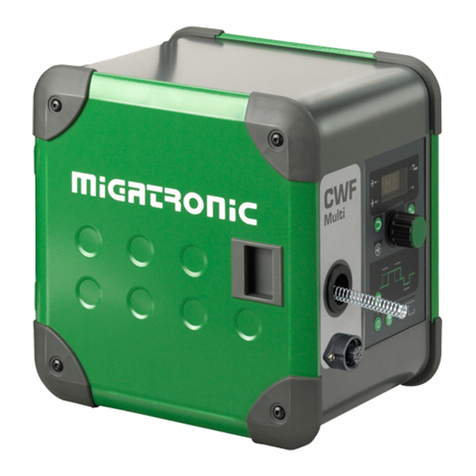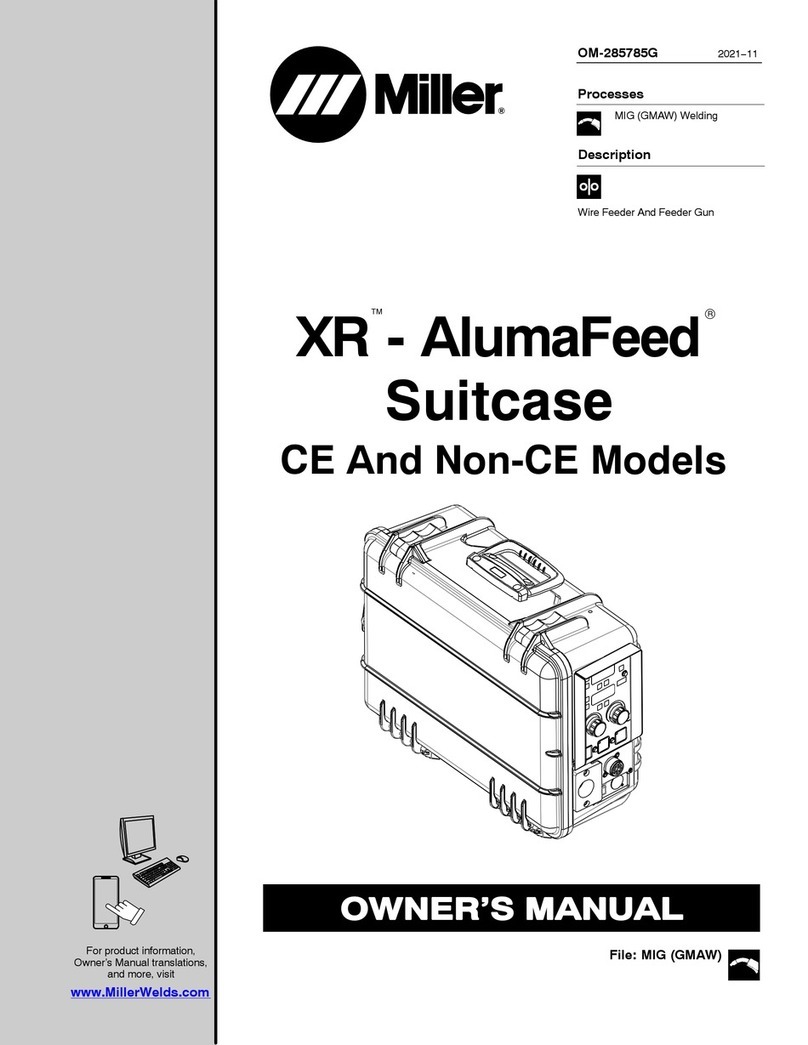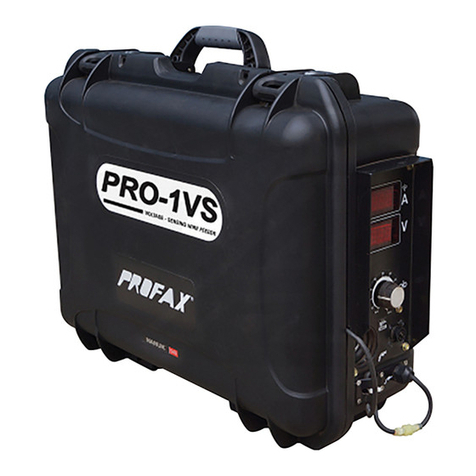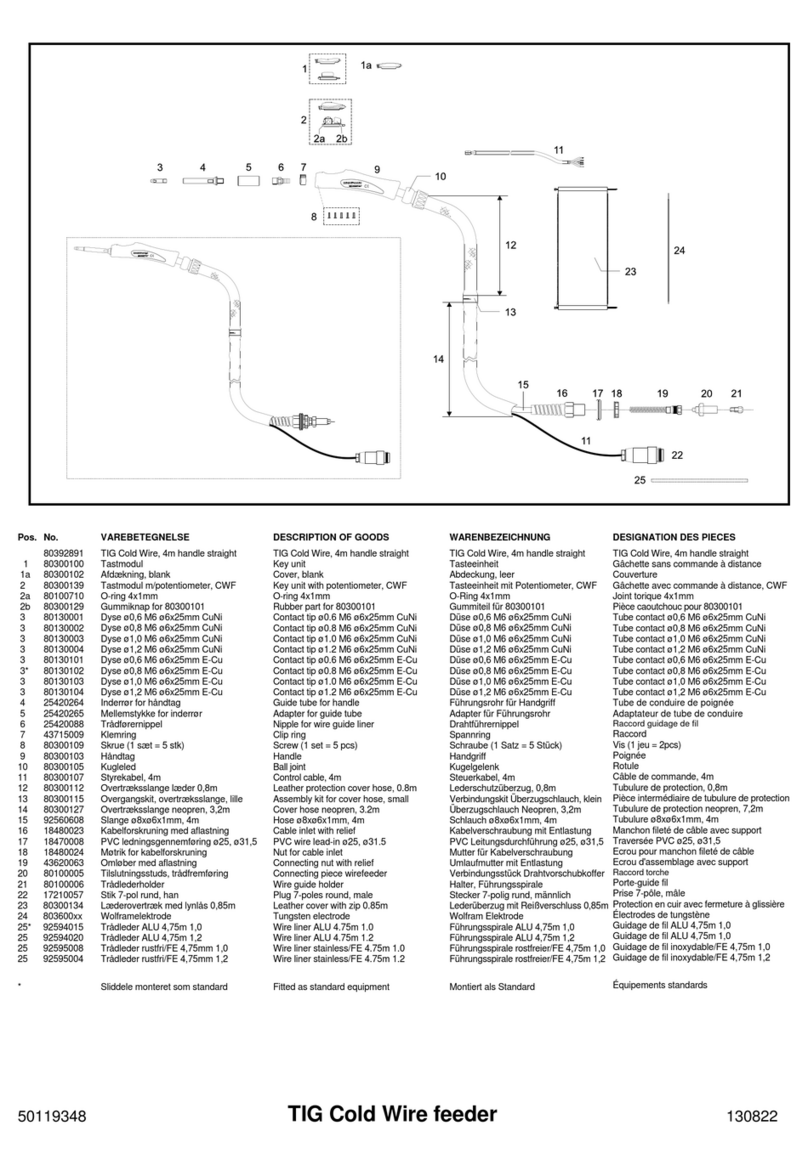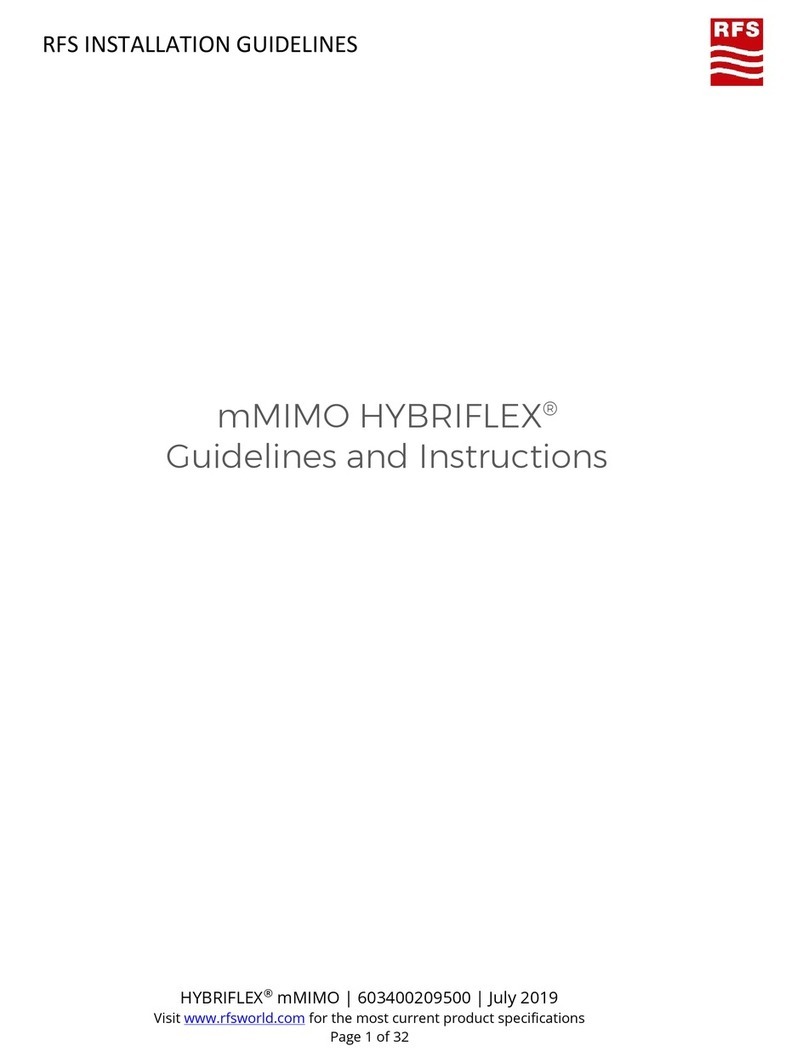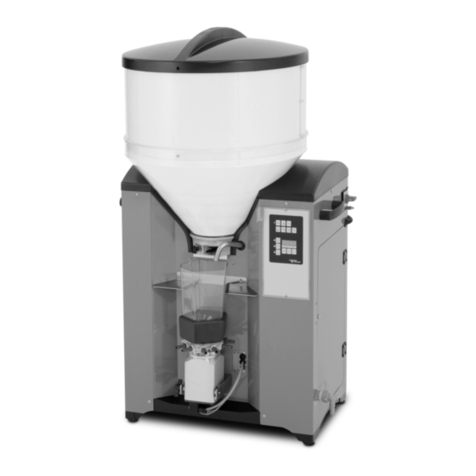
D-12 A, D-20 A, D-20 AR. Manual de Instrucciones. 7
CAPITULO 5. ANOMALÍAS. CAUSAS PROBABLES. SOLUCIONES POSIBLES.
SÍNTOMA. ANOMALÍA.
CAUSA PROBABLE.
SOLUCIÓN POSIBLE.
La máquina carece de tensión en alguno o
todos sus elementos vitales.
1.Observar que la tensión en la entrada de la
máquina existe; de no ser así hay que proceder a
cambiar la toma. Es conveniente observar si hay
algún magnetotérmico "saltado".
2. Comprobar que el fusible D de la devanadora no
este abierto.
PROBLEMA GENERAL.
NO FUNCIONA NADA.
3. Deben desmontarse los paneles de la máquina
testeando los puntos del esquema eléctrico lógicos
para el caso.
SALTA LIMITADOR.
Calibre del interruptor magnetotérmico
bajo para el caso. Puede existir un
cortocircuito que es el que provoca que
dispare el limitador.
Cambie el magnetotérmico por otro de mayor
calibre. Es importante que el interruptor
magnetotérmico sea de una curva característica tipo
lenta. En el caso de que la instalación eléctrica sea
de potencia limitada debe probar la realización del
trabajo de soldadura a niveles de corriente más
bajos.
Problema en la conexión fuente de potencia-
devanadora.
Compruebe que la conexión eléctrica entre la fuente
de potencia y la devanadora es correcta. El piloto
luminoso de la devanadora debe estar encendido.
Compruebe el fusible de la devanadora. Testee el
circuito eléctrico de la devanadora.
Fallo del interruptor de la pistola que no
realiza perfectamente el contacto.
Cambiar microinterruptor de la pistola.
SI BIEN LA MAQUINA SE
ENCUENTRA CONECTADA
Y CON EL PILOTO C
ILUMINADO, AL PULSAR
NO EXISTE NINGÚN TIPO
DE REACCIÓN
Placa electrónica de la devanadora averiada. Sustituir placa electrónica.
AL PULSAR LA PISTOLA, SI
BIEN SALE HILO, NO
ACTÚA EL CONTACTOR
O/Y NO FLUYE GAS DE
PROTECCIÓN
No llega tensión al contactor o/y
electroválvula.
Debe determinarse si el fallo proviene de la placa
electrónica o bien es un fallo de conexión eléctrica.
Compruebe que las bobinas del contactor o/y
electroválvula no están abiertas.
AL DEJAR DE PULSAR, EL
GAS DE PROTECCIÓN
SIGUE FLUYENDO.
Existe una impureza en la cámara interior de
la electroválvula que impide que el embolo de
esta cierre completamente.
Desmonte y limpie la electroválvula.
AL FINALIZAR DE SOLDAR
EL HILO QUEDA PEGADO
AL TUBO DE CONTACTO
DE LA ANTORCHA
El contactor tiene un retardo en la apertura
muy elevado.
Regule convenientemente el potenciómetro de
longitud final de hilo existente en la devanadora.
El contactor tiene un retardo en la apertura
muy bajo.
Regule convenientemente el potenciómetro de
longitud final de hilo existente en la devanadora.
AL FINALIZAR DE SOLDAR
LA LONGITUD FINAL DE
HILO ES MUY ELEVADA Se retira la antorcha de forma inmediata al
dejar de oprimir el pulsador de la antorcha.
El sistema de control de longitud final de hilo exige
que no se retire de forma inmediata la antorcha de
soldadura al dejar de oprimir el pulsador de la
antorcha.
Tensión efectiva de soldadura baja. Onda de
salida no correcta.
Comprobar que no existe un fallo de fase en la
tensión de alimentación.
Comprobar que los elementos eléctricos de contacto
del circuito de soldadura son correctos: Masa de
soldadura, superficies oxidadas o muy sucias. tobera
de contacto de diámetro superior al del hilo...etc.
Testear el esquema eléctrico de la fuente de
potencia: Tensiones de entrada y salida al
rectificador.
EL EQUIPO NO SUELDA
CORRECTAMENTE.
“REGULA MAL”
El hilo de soldadura tiene una resistencia
mecánica en su salida que impide que
mantenga una velocidad uniforme.
Examine la pistola de soldadura. Sople el interior de
esta (sirga) con aire comprimido.
Reactancia seleccionada baja. Cambie la toma de reactancia H de la fuente de
potencia a un valor más elevado.
EN EL PROCESO DE
SOLDADURA EXISTEN
MUCHAS PROYECCIONES. Gas de protección no adecuado. En la soldadura de los aceros normales aconsejamos
la utilización de un gas mezcla Ar-CO2.
